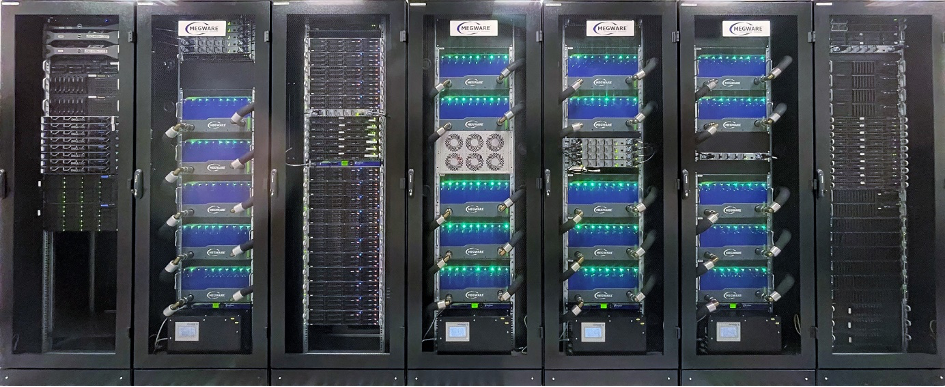This DEEP prototype consists of a 50-node dual-processor Intel® Xeon® Cluster module using InfiniBand EDR, a 75-node Booster with one NVIDIA V100 GPU each coupled to a small x86 host CPU and its own EDR InfiniBand interconnect, a data analytics module with 16 high-end dual-processor Intel® Xeon® nodes with dual-processor Intel® Xeon® nodes. A conventional, disk-based storage module and an innovative, NVMe flash module support low-latency, high-bandwidth parallel I/O via the BeeGFS parallel file system. The Cluster and Booster modules use Megware’s blade and warm water cooling technologies, and Megware-developed power meters report the overall power and energy use of each node with a time resolution of a few milliseconds. ParaStation MPI provides seamless and transparent communication across the whole prototype.
Together with the lessons learnt from the previous DEEP projects, eight complex, real-world HPC applications from the fields of computational fluid dynamics, earth system simulation, molecular dynamics, neutron transport, seismic imaging (app1, app2), and weather forecasting provided co-design input for the DEEP-SEA SW stack. The space weather application introduced AI/ML components.

The DEEP-SEA project started on April 1, 2021 and is scheduled to end on March 31, 2024. The consortium consists of fourteen partners from eight European countries, with Forschungszentrum Jülich acting as the coordinator. The project budget was 15.1 M€, and the indicative European Union and national funding amounts to this budget.
The DEEP-SEA Project is receiving funding from the European High-Performance Computing Joint Undertaking (EuroHPC JU) under grant agreement n° 955776. The EuroHPC JU receives support from the European Union’s Horizon 2020 research and innovation programme and Germany, France, Spain, Greece, Belgium, and Sweden.





